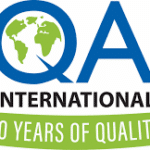In product safety and quality assurance, the true difference between good and great isn’t just in the testing – it’s in the training.
As supply chains grow more complex, brands face increasing pressure to reduce costs, shorten lead times and comply with evolving regulations. Yet, many overlook the most strategic investment available: training their factories and suppliers – and verifying that training is being implemented.
At QAI, we’ve learned through decades of experience across Asia, Central America and beyond that continual improvement at the factory level leads to better products, safer working conditions and stronger brand protection. But training alone isn’t enough. Ongoing oversight by a trusted third party ensures that the right behaviors actually stick.
Why Factory Training Matters
Every factory aims to produce quality goods, but “quality” can mean different things depending on compliance standards and brand expectations.
Training a factory or supplier on the specific requirements of your program – covering materials, labeling, storage, handling and testing – ensures that everyone understands what is expected. This kind of training establishes a common language, prevents mistakes before they happen and builds a culture where quality is prioritized at every step.
RELATED: Solutions Center: Product Testing
In many cases, consistent training also reduces the need for repeated testing because performance becomes more reliable. When factories understand not just what they must do, but why requirements exist, such as the importance of correct packaging labels, FIFO inventory management or the safe handling of regulated materials, they are far more likely to meet standards consistently.
Why Third-Party Verification Is Essential
Even with thorough training, factories can revert to old habits, especially when under pressure to deliver quickly. That is why third-party verification is so important. Independent oversight through audits, documentation reviews, testing checks and supplier traceability assessments provides assurance that training is being followed in practice.
The role of an outside partner is not to assign blame but to act as a presence on the ground, confirming that standards are upheld and offering corrective guidance when necessary. This added layer of accountability strengthens the entire compliance process.
The Long-Term Payoff
Although training and oversight require an initial investment of time and resources, the return is substantial. Factories that understand requirements and are consistently monitored experience fewer failed tests and costly reworks, face less need for random testing and move through production more smoothly.
The likelihood of delays at customs is also reduced, leading to faster, more predictable delivery. Over time, these improvements translate into significantly lower compliance costs, as the supply chain shifts from reactive problem-solving to proactive responsibility.
Stronger Suppliers, Stronger Partnerships
The benefits of training and oversight extend to suppliers as well. Factories gain safer working environments through proper handling practices and ventilation, greater clarity on expectations and fewer miscommunications with buyers. These improvements often result in stronger, long-term relationships with customers.
Additionally, a well-trained factory is more likely to pass audits from any client, not just the one who provided the training. In supporting suppliers’ success, brands ultimately strengthen their own supply chains and create partnerships built on mutual investment and trust.
Training and third-party verification aren’t one-time events – they’re part of a continuous improvement cycle. By starting with clear expectations and checking progress regularly, you build a smarter, more resilient supply chain.
This article was originally published by PPAI business services member HQTS-QA International, which specializes in product testing.


